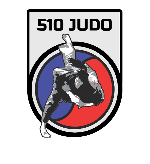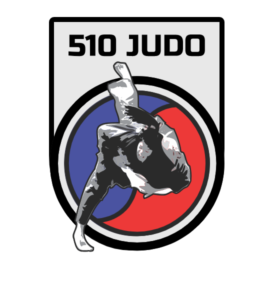JUDO AND JIUJITSU CLASSES IN SAN LEANDRO

WHAT WE DO
510 Judo provides high quality instruction in judo and jujitsu in the city of San Leandro, serving all the surrounding bay area. We are located in the Estudillo Estates area of San Leandro, just off the 580 and less than two miles from the San Leandro BART station. We offer classes for both kids and adults. Judo is great for keeping in shape, self-defense and body awareness. It’s also incredibly fun. Come join us!
Have fun
Learn a skill
Get in shape
MEET OUR BLACK BELTS


4th Dan in Kodokan Judo
8th Dan in Small Circle Judo and Jujitsu
1st Dan in Kokoshin Judo
2nd Dan in Danzan Ryu Jujitsu
COMPETITION
2003 World Masters Silver 50-55 yr division
2002 World Masters Bronze 50-55 yr division
2001 World Masters Silver 50-55 yr division
2000 World Masters Silver 61 kilo 45-49 yr division
1969 Collegiate Nationals Bronze
1968 High School National Champion 120lb division
1968 winner of the Professor Yamaouchi award for sportsmanship


FREQUENTLY ASKED QUESTIONS

Judo is a martial art and Olympic sport that uses throws, holds and submissions. It is excellent for self defense, a great workout, and a lot of fun!
Brazilian Jiujitsu (BJJ) is a method of fighting and self defense without weapons. It’s very similar to judo – the uniform is the same, the belt system is similar, many of the techniques overlap. Where BJJ differs is in the emphasis on ground techniques. Generally speaking BJJ focuses about 80/20 on groundwork to standing techniques, whereas judo is the inverse at about 80/20 throws and takedowns to finishing techniques on the ground. This is of course a generalization – individual schools and instructors all have their own style.
BJJ and judo work very well together! You are encouraged to train both.
Yes! Although accidents can happen in any physical endeavor, at 510 Judo we create a culture of respect and safety. You have to look out for your training partners and treat them well, or soon you’ll find yourself without anyone to practice with.
One of the very first things a new student learns is how to fall properly – there is a technique to it! Once you learn the technique of falling and get comfortable with it, you will lose your fear of falling and start to progress very quickly.
Judo and wrestling are closely related. They both fall under the umbrella of “grappling” meaning a way of fighting without striking – no punching or kicking is allowed. They are both Olympic sports with millions and perhaps billions of participants worldwide in all age groups. The main differences fall into three categories: uniform, application of sport rules, and philosophy.
A judo uniform consists of a thick cotton jacket and pants, and a colored belt indicating your rank. No shoes are worn. This uniform is worn in practice and in competition, and the only colors allowed are white and blue. In wrestling competition one usually wears a wrestling singlet, a one piece item that allows maximum maneuverability, as well as special wrestling shoes, and sometimes headgear is worn to protect the ears. In wrestling practice people usually wear sweatpants and a t-shirt with their wrestling shoes, and sometimes a sweatshirt if the weather is cold.
In judo, you must attempt to throw your opponent flat on their back – if you can do this with force and control, you will be awarded ippon by the referee, an instant win. The jacket and belt are used to throw your opponent, so the game of fighting for grips is of crucial importance. You can also win by pin or a submission such as a choke or armbar. Since 2010, you are not allowed to grab the pants or anywhere below the belt for the purpose of throwing your opponent.
In American folkstyle wrestling, the objective is to take down and control your opponent and pin them by putting both shoulder blades on the mat for two seconds. Grabbing the uniform is not allowed, so wrestlers learn to control their opponents by holding and throwing them by the wrist, head, shoulder, legs, waist, ankle – anywhere you can get a grip. You are not required to throw them on their back – as long as they fall down and you retain control, that’s all that matters.
Judo’s two mottoes are seiryoku zenyo and jita kyoei, meaning “maximum efficiency, minimum effort” and “mutual welfare and benefit” respectively. The first refers to the efficient use of body mechanics and the preservation of energy, while the second refers to the idea that judo can be used to benefit everyone – participants and society at large. Dr. Jigoro Kano, the inventor of judo, was an educator and dedicated to the idea that judo could be used to produce good people and good citizens.
Wrestling rewards hard work and intensity more than any other sport. As a sport with weight divisions, athletes of any size can participate and rise to the top. As a wrestler, your child will learn that they can accomplish anything with the right attitude.
Yes! In fact we encourage it. Judo will make you a better wrestler, and wrestling will make you a better judoka. All wrestling and kid’s judo classes are included with a Youth Membership.
You can buy a 510 Judo branded uniform (judogi) from us, or you can just search “judo uniform” on the internet. They even sell them on Amazon these days.
Modern sport judo is an amazing, fast paced activity that develops timing, strength, balance, and coordination. However, as an Olympic sport, it is subject to frequent rule changes and tweaks, designed to make judo more friendly to the average television viewer. Some of these rule changes are detrimental to judo as a practical martial art for self defense. Most notably, the 2010 ban on grabbing the legs eliminated a large set of useful techniques.
Although we pay attention to both sport and non-sport applications in all classes, on Monday nights we specifically ignore most of the modern sport rules – as long as we can practice a technique safely, it’s allowed. This approach to judo is very satisfying – after all, saying “hey that’s not allowed!” is not a useful self defense technique!
Just that – judo done without a gi. Just wear comfortable workout clothes – a rashguard and fight shorts are also great for maximum maneuverability. Without a thick jacket to grab on to, you will learn to use various body parts as your handles. This class incorporates some of the most useful techniques from wrestling and jiujitsu for a more complete fighting system.




